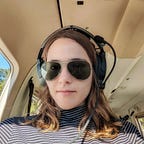How to Become a Commercial Multi-Engine Pilot in America
If your aviation dreams involve piloting larger and more complex aircraft, becoming a commercial multi-engine pilot in the United States is an exciting path to pursue. This journey requires dedication, training, and meeting specific requirements. Here’s a step-by-step guide on how to achieve your goal:
1. Meet the Age Requirement:
- To apply for a commercial pilot certificate, you must be at least 18 years old.
2. Obtain a Private Pilot Certificate:
- Before advancing to multi-engine training, you must hold a private pilot certificate. This involves a minimum of 40 flight hours, including 20 hours of flight training with an instructor and 10 hours of solo flight time.
3. Accumulate Flight Hours:
- Log a total of 250 flight hours, including at least:
- 100 hours of pilot-in-command time.
- 50 hours of cross-country flight time.
- 10 hours of solo flight time.
4. Night Flight Hours:
- Acquire 10 hours of night flight time, which should include 5 hours of solo night flight.
5. Instrument Training:
- Complete 10 hours of instrument training, with up to 5 hours allowed in an approved flight simulator.
6. Complex Aircraft Experience:
- Accumulate a minimum of 10 hours of flight time in a complex aircraft, which has retractable landing gear, a controllable-pitch propeller, and flaps.
7. Multi-Engine Training:
- Enroll in a multi-engine training program with a certified flight instructor. This training will include dual flight hours in multi-engine aircraft to prepare you for the multi-engine rating.
8. Multi-Engine Rating:
- Successfully pass the FAA Multi-Engine Practical Test (checkride) with an FAA-certified examiner. This flight test evaluates your skills in flying multi-engine aircraft.
9. Commercial Pilot Ground School:
- Participate in a commercial pilot ground school program or self-study to prepare for the FAA written exam. The exam assesses your knowledge of aviation regulations, navigation, meteorology, and other related subjects.
10. Medical Certificate: — Obtain a Class II medical certificate from an FAA-authorized aviation medical examiner to ensure your fitness for commercial aviation.
11. English Proficiency: — Maintain proficiency in the English language, as it is the standard language of aviation communication.
12. Age Requirement (Commercial Operations): — To work as a commercial pilot for hire, you must be at least 21 years old.
13. Commercial Multi-Engine Pilot Certificate: — Once you meet all the above requirements and successfully pass the FAA practical test for multi-engine flying, you will receive a commercial multi-engine pilot certificate, enabling you to operate as a commercial pilot in multi-engine aircraft.
14. Continuing Education: — To stay current and maintain your commercial pilot status, you’ll need to accumulate flight hours, complete recurrent training, and adhere to FAA regulations.
Becoming a commercial multi-engine pilot opens up diverse career opportunities, from flying regional airliners to corporate jets. Your journey may be challenging, but the rewards of soaring through the skies in multi-engine aircraft make it well worth the effort. Stay committed to continuous learning and safety to excel in your career as a commercial multi-engine pilot in America.
